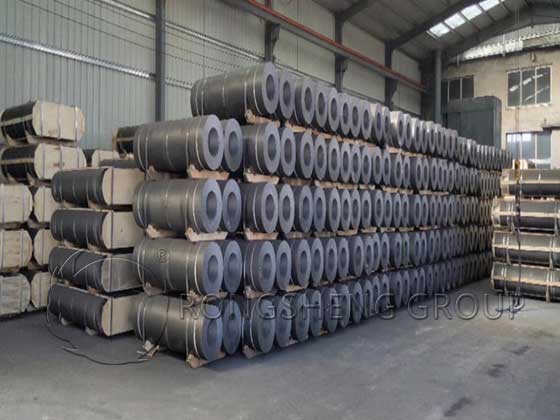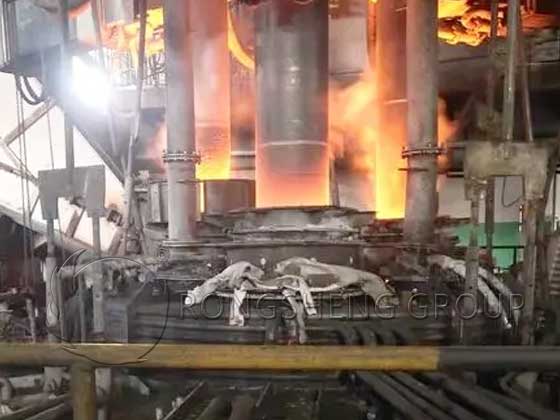Graphite electrodes are an important part of the steelmaking industry as they play a vital role in the electric arc furnace (EAF) steelmaking process. These high-performance electrodes are made of graphite, a crystalline form of carbon, and are used as an electrically conductive material to transmit electrical energy to the electric arc furnace. Graphite electrodes are superior to other materials due to their high thermal conductivity, low thermal expansion, and excellent electrical conductivity.

The electric arc furnace (EAF) steelmaking process involves the use of graphite electrodes to melt scrap steel and other raw materials in a furnace. Electrodes are placed into the furnace and current is passed through them to create an arc, which creates heat that melts the raw material. The molten steel is then cast into the desired shape.
Graphite electrodes are primarily used in the steelmaking industry, but they are also used to produce other metals such as aluminum and copper. The https://graphelectrode.com/wiki/arc-furnace-electrodes.html are available in a variety of diameters, lengths, and grades to suit different furnace sizes and steelmaking requirements.
The manufacturing process of graphite electrodes involves the use of high-quality petroleum coke and needle coke as raw materials. The raw material is crushed, mixed with coal tar pitch, and baked in a furnace at temperatures over 2,000°C to form solid graphite blocks. The blocks are then cut into the desired shape and size to produce the final product.

Graphite electrodes offer several advantages over other materials used in the EAF steelmaking process. They have a higher melting point than steel, which allows them to withstand the high temperatures in a furnace without melting. They also have excellent thermal shock resistance, which means they can withstand rapid changes in temperature without cracking or breaking.
Another advantage of graphite electrodes is their ability to conduct electricity efficiently. This is important because the more efficient the electricity transmission, the faster the melting process and the more cost-effective the entire steelmaking process is. Additionally, graphite electrodes have a low coefficient of thermal expansion, which means they do not expand significantly when heated, reducing the risk of cracking or breaking during use.
Graphite electrodes are also environmentally friendly. They produce less smoke and emissions than other materials used in the steelmaking process, making them a more sustainable option for the industry.
In summary, graphite electrodes are an important part of the steelmaking industry and their importance cannot be overstated. They are a key component in EAF’s steelmaking process, enabling efficient transmission of electrical energy to the furnace and producing high-quality steel products. Their unique properties, such as high thermal conductivity, low thermal expansion, and excellent electrical conductivity, make them a preferred choice over other materials. Additionally, their production process is environmentally friendly, making them a more sustainable option for the industry. As the steel demand continues to grow, the demand for graphite electrodes will undoubtedly grow with it.

Application of Graphite Electrodes for Steelmaking
Graphite electrode steelmaking inputs electric energy into the electric arc steelmaking furnace through graphite electrodes and uses the arc generated between the electrode end and the charge as the heat source to make steel. The electric arc furnace uses electric energy as the heat source and can adjust the atmosphere in the furnace, which is extremely beneficial for melting steel types that contain more easily oxidized elements.
Graphite electrodes are used when smelting various alloy steels and iron alloys. At this time, a strong current is introduced into the smelting area of the electric furnace through the electrode, generating an arc, which converts electrical energy into heat energy. The temperature rises to about 2000 degrees to achieve the purpose of smelting or reaction.
In addition, when electrolyzing metal magnesium, aluminum, and sodium, graphite electrodes are also used as the anode of the electrolytic cell. The resistance furnace that produces emery also uses graphite electrodes as the conductive material of the furnace head.
We produce graphite electrodes of various specifications such as ordinary/high power/ultra high power/impregnated. The product has the characteristics of wear resistance, high-temperature resistance, corrosion resistance, impact resistance, oxidation resistance, and easy electrical and thermal conductivity.
